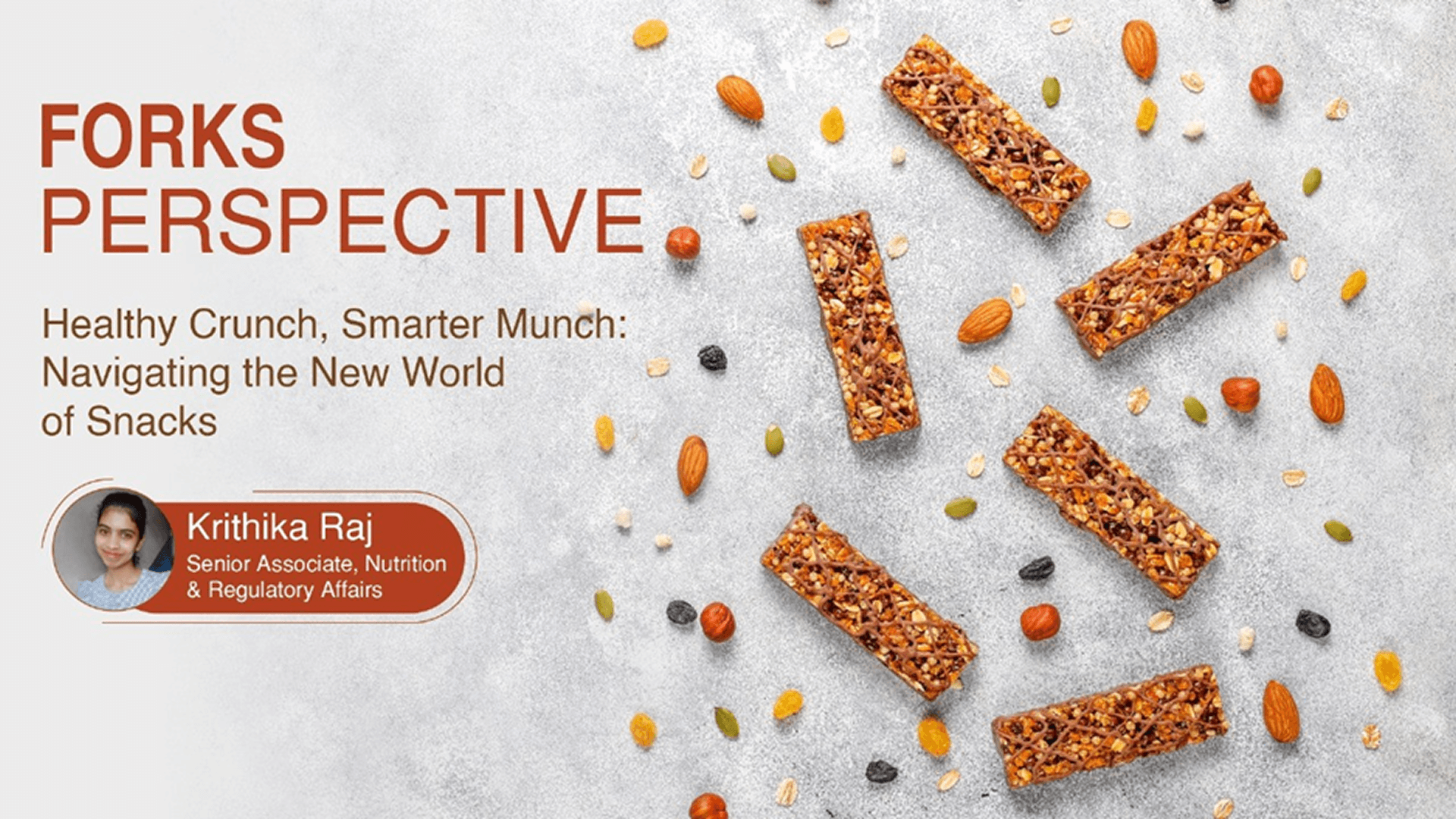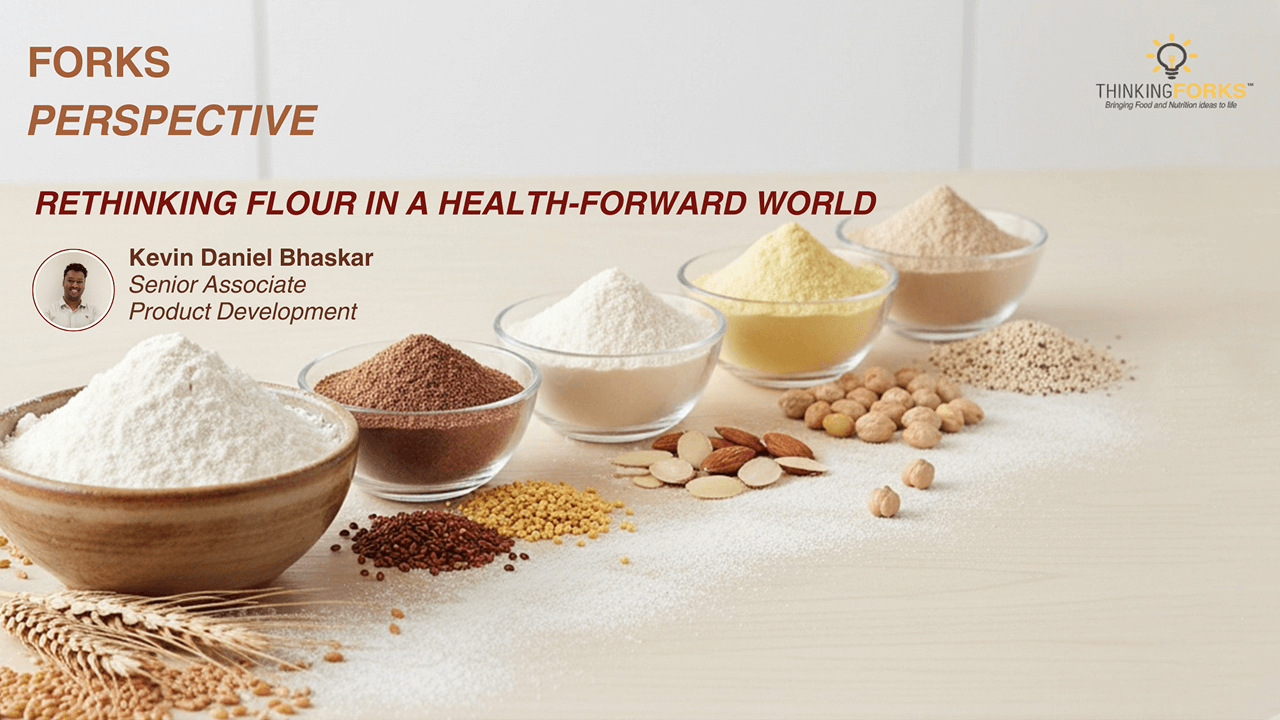In recent years, consumers often look for “the best of both worlds” because health priorities and lifestyles have become quite complex. On one hand, consumers want foods that are nutritious, functional and support health goals. On the other hand, they still feel the need to enjoy these benefits without having to compromise on taste, flavour and pleasure. This shift in consumer preferences has led to the demand for better-for-you alternatives to conventionally formulated foods. With increasing urbanization, changing eating habits and lifestyles, snacks, often associated with indulgence, have undergone a huge transformation.
Snacks have become a focal point of this movement because they are often consumed on-the-go, between meals, or during moments of stress or indulgence, times when people tend to make less mindful choices. By offering healthier versions of these everyday treats, brands tap into a powerful opportunity and help consumers make better choices without sacrificing enjoyment. There has been a boom of brands launching healthier versions of snacks, aligning with evolving consumer demands and preferences. Food business operators are exploring multiple ways of changing conventional formulations of snacks such as
- Incorporation of healthy ingredients such as whole grains, millets, seeds etc.
- Value addition of existing formulations by increasing levels of protein, fibre and fortification with micronutrients, good fats etc.
- Modification of certain nutrients such as lowering fat, sugar and sodium values, owing to the rise in non-communicable diseases in the Indian population.
- Removing or reducing use of additives such as artificial colours, flavours, preservatives etc. to encourage clean labels and simpler formulations.
- Opting for cooking processes that are more health-friendly such as baking, air frying etc. instead of deep frying.
While these efforts have been well-received in the food industry and generally applauded by consumers, the better-for-you snack market has entered an advanced space now. A small segment of brands has leaped from the better-for-you snack space to a functional snack space where the main focus lies on the health benefit the product claims to impart. Brands these days, are seen adding selected nutrients and herbal ingredients catering to highly specialized health benefits such as gut health, immunity, pain alleviation, skin vitality, restful sleep etc. into daily treats such as chips, chocolates, frozen and baked snacks.
However, it is important to be careful when choosing snacks because food labels can sometimes be misleading, creating a false impression of health benefits. Without carefully reading the nutrition facts and ingredient list, consumers may be misled into choosing products that do not support their health goals and may even contribute to poor dietary habits. Therefore, it becomes quite imperative to be aware of the factors to consider while evaluating functional/better-for-you snacks.
- Levels of Functional Ingredients/Nutrients: When reviewing a product, check the ingredient list to confirm that any nutrient or ingredient linked to a certain claim is present at a clinically meaningful level, enough to actually deliver the stated benefit. Verify whether it is being added at credible levels rather than just being included as a halo ingredient at insignificant amounts, for label appeal. Ensure that the claim is backed by scientific evidence and is not vague or misleading.
- Look for Additional Goodies: While functional snacks are generally targeted around specific health benefits, it is also worth checking if they provide essential nutrients like protein, fibre, vitamins and minerals that support overall wellbeing. To know if a product really offers these in significant amounts, look for clear claims on the pack such as “Source of Protein” or “Rich in Vitamin C”, as these indicate that the snack meets established nutrition standards.
- Assess the Snack as a Whole: When incorporating snacks into the diet, it is important to ensure they provide meaningful calories from a balanced mix of protein, fibre, and healthy fats rather than being filled with empty calories from added sugars. While functional benefits may add value to the snack, equal attention must be given to nutrients of concern such as sugar, fat, and sodium. A snack that claims to support health but is high in these components does not truly align with overall wellness.
- Keep in Mind: It’s Still a Snack: No matter how compelling the claim, the product remains a snack and cannot compensate for whole foods or a balanced diet. Consider whether it adds real value to nutrition rather than just serving as a marketing-driven product. Even if the snack offers good nutrition and actual health benefits, make sure to treat it like a snack, and not as a replacement for a regular, healthy diet. Snacks are generally consumed in between meals and eating in accordance to recommended serving sizes encourages portion control and helps avoid overeating.
In today’s world, consumers are faced with a myriad of choices with food companies going to great lengths to create innovative snacks that deliver nourishment along with indulgence. However, it becomes a responsibility of every conscious buyer to make smart food choices and adopt a well-rounded approach to identify foods which offer real nutrition and health benefits. After all, informed food choices not only enhance individual health outcomes but also drive demand for transparent, consumer-focused labelling and product development strategies across the food industry.




